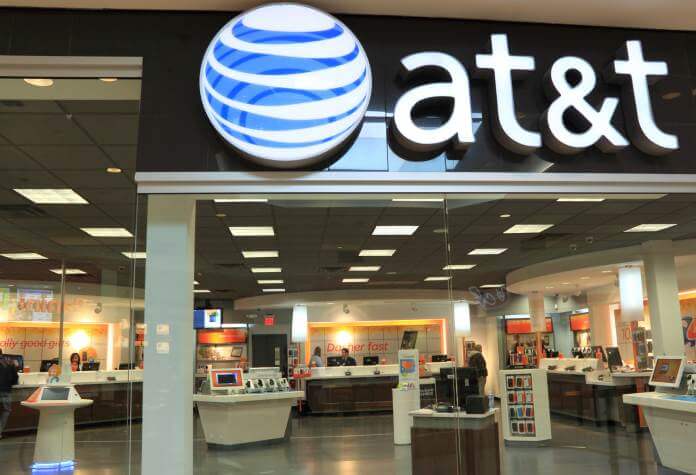After the telecoms firm recorded another quarter of significant subscriber growth and above earnings projections, AT&T stock (NYSE:T) increased by more than 9% in early trade on Thursday.
In that time, the business added 708,000 postpaid phones to its 1.5 billion postpaid phone net additions from the first half of the year. In the most recent quarter, postpaid phone churn was 0.84%.
According to AT&T (NYSE:T) investor relations chief Amir Rozwadowski, subscriber traction showed “more of the same.” He added that while some wireless rivals have been changing their promotions every few weeks, AT&T has maintained a more consistent approach, which he saw as advantageous for both customers who understand what the company is offering and store associates who don’t have to make significant messaging changes.
In the third quarter, AT&T also added 338,000 net fiber users.
AT&T Stock (NYSE:T) Went Higher
In early Wednesday trade, shares were up 9.5% and on pace for their biggest single-day performance since March 13, 2020, when they gained 10.0%. According to Dow Jones Market Data, the company is also on track to register its greatest after-earnings rise since at least 1997.
After accounting for company divestitures, sales came in at $30.0 billion, down from $31.3 billion the year before but up from $29.1 billion for standalone AT&T. According to FactSet, revenues would total $29.8 billion.
The last quarter’s decline in headline revenue was ascribed by AT&T (NYSE:T) to both decreased business wireline revenue and the sale of its U.S. video division in July. Higher mobility revenue largely countered such trends.
For the whole year, AT&T anticipates revenue growth from mobility services to be at the “high end” of the 4.5% to 5% range. In its second-quarter report, it stated that 4.5% to 5% growth was its goal.
On the company’s earnings call, Chief Executive John Stankey stated that “our results suggest that the plan we put out more than two years ago is the correct approach for the future not only of our business, but for the future of the communications industry.”
Both consumers and AT&T are affected by the present inflationary environment, and the firm recently increased the cost of several legacy plans in order to cover its own inflationary expenses. Despite consumer financial strains, Rozwadowski claimed that AT&T has seen customers switch to higher-tier plans more frequently because they perceive such plans to be more valuable.
He acknowledged that AT&T stock was “absolutely seeing signals of inflation across our business,” but he also made clear that consumers appeared to value connection services highly when they weighed their costs. You definitely need phone and broadband more today than you did during the previous recession, said Rozwadowski.
Last quarter, AT&T officials made note of the fact that some customers were paying their bills a little later than usual, but they were still doing so. Customer payment timelines are remaining constant at pre-pandemic levels, according to Rozwadowski, and the business is “not seeing any major difference relative to what we observed last quarter.”
In comparison to the same period a year previous, the company’s third-quarter income from continuing operations was $6.3 billion, or 79 cents per share.
After accounting for actuarial gains on benefit plans and several other variables, AT&T (AT&T stock) reported earnings from continuing operations of 68 cents per share, up from 66 cents per share a year earlier and higher than the 62 cents per share reported for standalone AT&T during the same time period. The corporation sold off its U.S. video division last summer, so the standalone statistic takes that into account.
For AT&T’s third quarter, analysts monitored by FactSet projected adjusted profits of 61 cents per share.
AT&T’s most recent earnings, according to Citi Research analyst Michael Rollins, were a “step forward” because they “show a better mix of profitability compared to its sales growth.”
In a letter to clients, he said, “Results suggest that AT&T is extremely competitive in cellular, while exhibiting forward progress on boosting fiber net additions with its expanding footprint.”
In the September quarter, AT&T earned $3.8 billion in free cash flow from continuing operations. On the results conference, Chief Financial Officer Pascal Desroches stated that AT&T felt “comfortable about our line of sight to meeting our free cash flow target in the region of $14 billion for the year.”
According to Rozwadowski, the business’s main objective is to reinvest profits in the network.
“The business is generating a fair amount of cash,” he added. By using that revenue to fund network upgrades, AT&T aims to create a “flywheel effect” that would encourage customers to stay with the firm and pay more for premium plans.
AT&T was “quite happy with our cash levels after fulfilling our dividend pledge,” Desroches continued on the conference call, and he added that “this should only rise in future years as we expect cash conversion to improve from here.”
The business forecasts “$2.50 or higher for AT&T stock price” adjusted profits per share from continuing operations for the whole year, vs $2.53 expected by FactSet-tracked analysts.
Featured Image – Megapixl © Luckydoor









